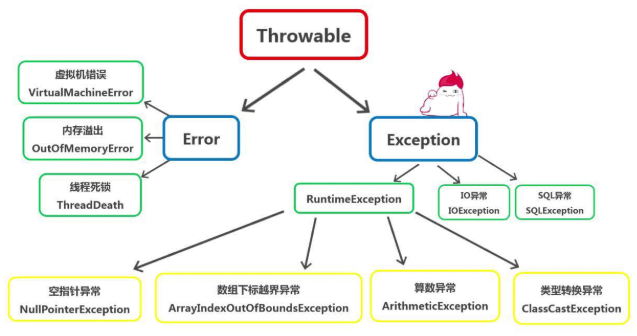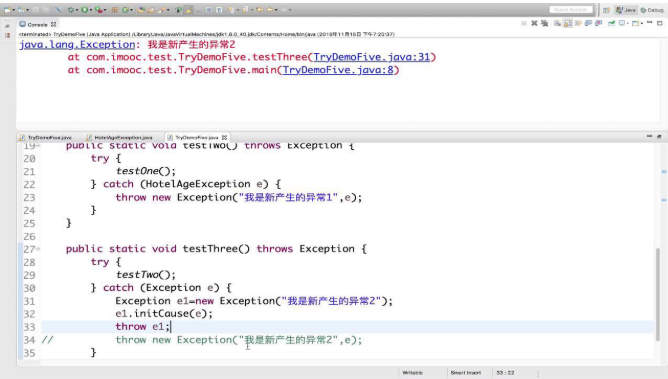异常
Throwable 有Error(程序无法处理的)和Exception
Exception
有非检查异常(编译器不要求强制处理的异常)
有检查异常,包含IO异常、SQL异常

异常处理
异常处理机制为:抛出异常、处理异常。
try、catch、finally用于捕获异常
throws声名异常
throw抛出异常
语句:System.exit(1);表示结束finally语句,System.exit(1)后面的语句都不会被执行
如果finally语句块中有return语句,try/catch语句块中的return语句会被忽视
throws和throw
throws声明将要抛出何种类型的异常
1、使用throws声明的异常可以是throw抛出异常的父类或相同类型但不能是子类
2、通过throw抛出的如果是非检查型异常,编译器不会有提示错误 。
throw用来抛出一个异常。
例如:throw new IOException(); throw抛出的只能够是可抛出类型Throwable或者其子类的实例对象。
自定义异常
自定义异常,就是定义一个类,去继承Throwable类或者它的子类
public class HotelAgeException extends Exception{
public HotelAgeException (){
super("18岁以下住店必须由亲友陪同"); }
}
方法中调用时则 throw new HotelAgeException();
异常链
异常链 有时候我们会捕获一个异常后在抛出另一个异常 顾名思义就是:将异常发生的原因一个传一个串起来,即把底层的异常信息传给上层,这样逐层抛出。
异常链的表现方法: 1、通过构造方法对旧异常对象的获取 Throwable(String message, Throwable cause) -- 保留底层异常的异常信息。 2、通过initCause(Throwable cause)方法用来获取原始异常的描述信息,其中cause是原始异常的对象






















 951
951











 被折叠的 条评论
为什么被折叠?
被折叠的 条评论
为什么被折叠?








